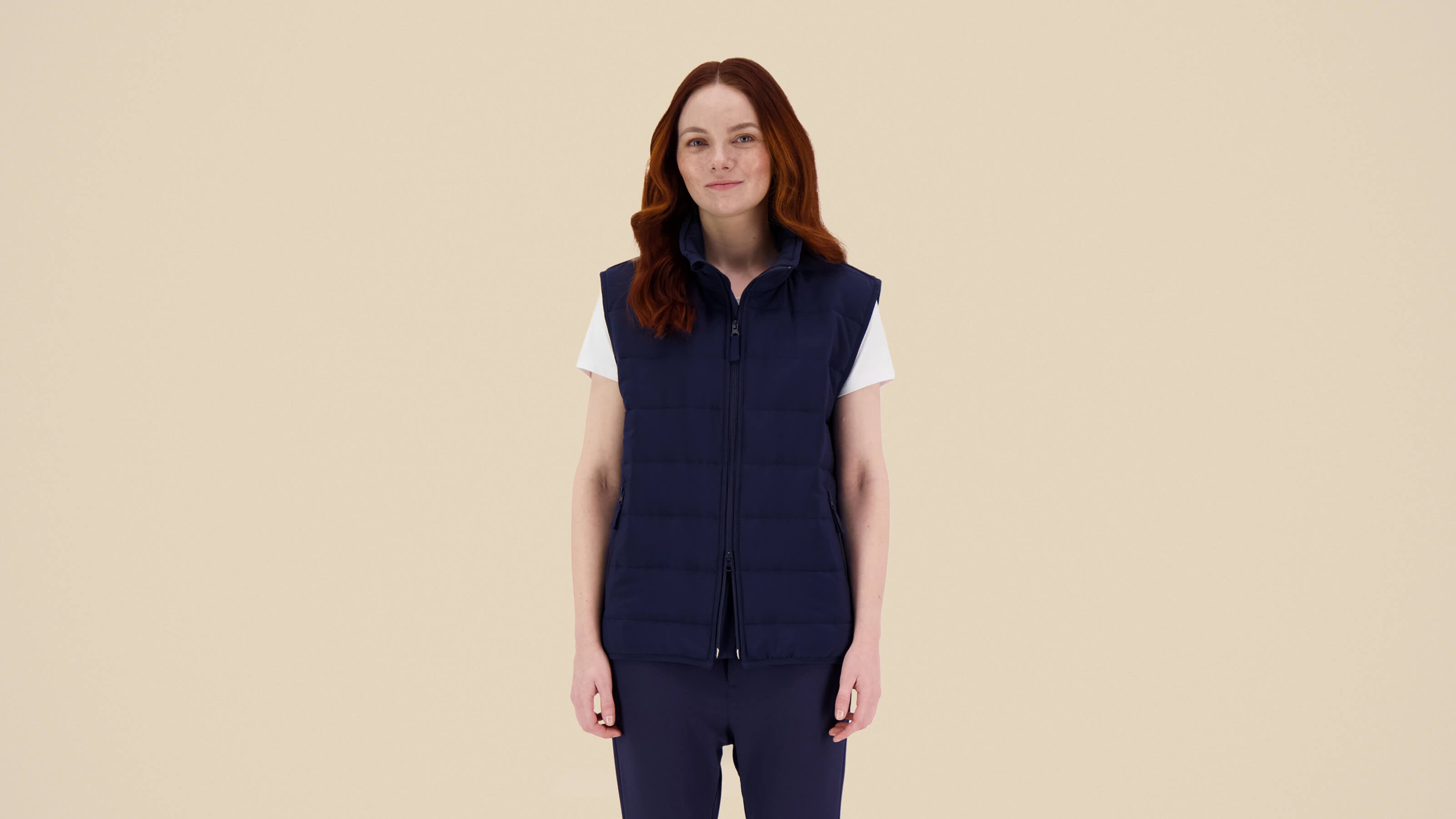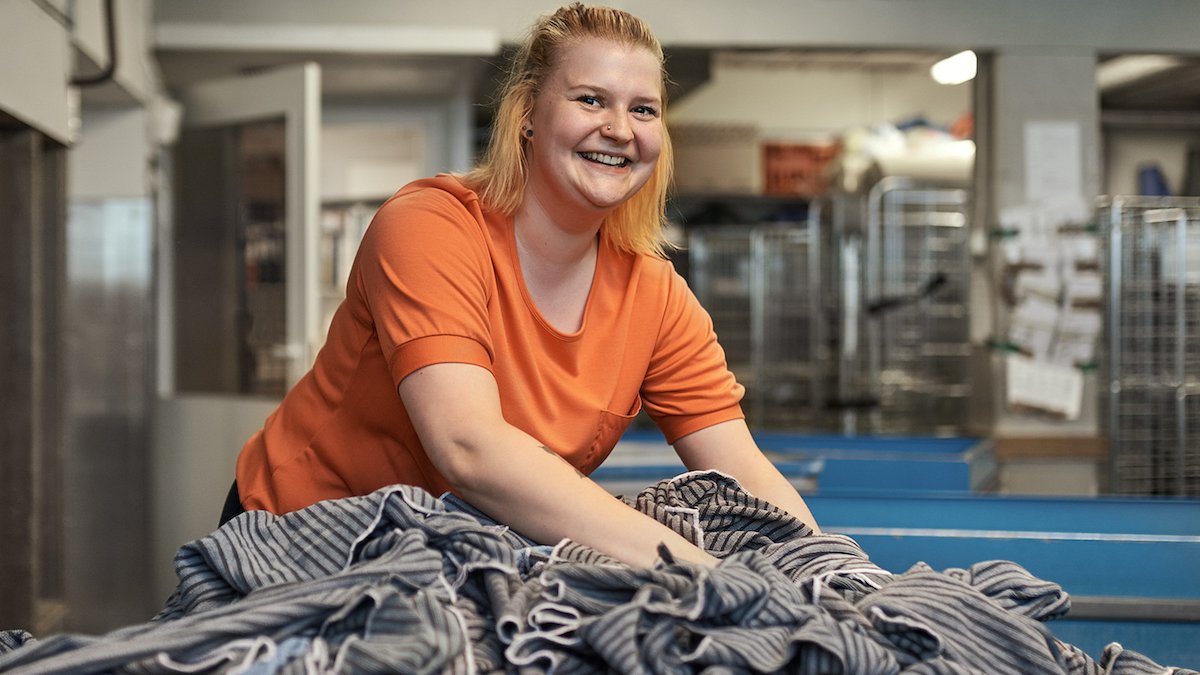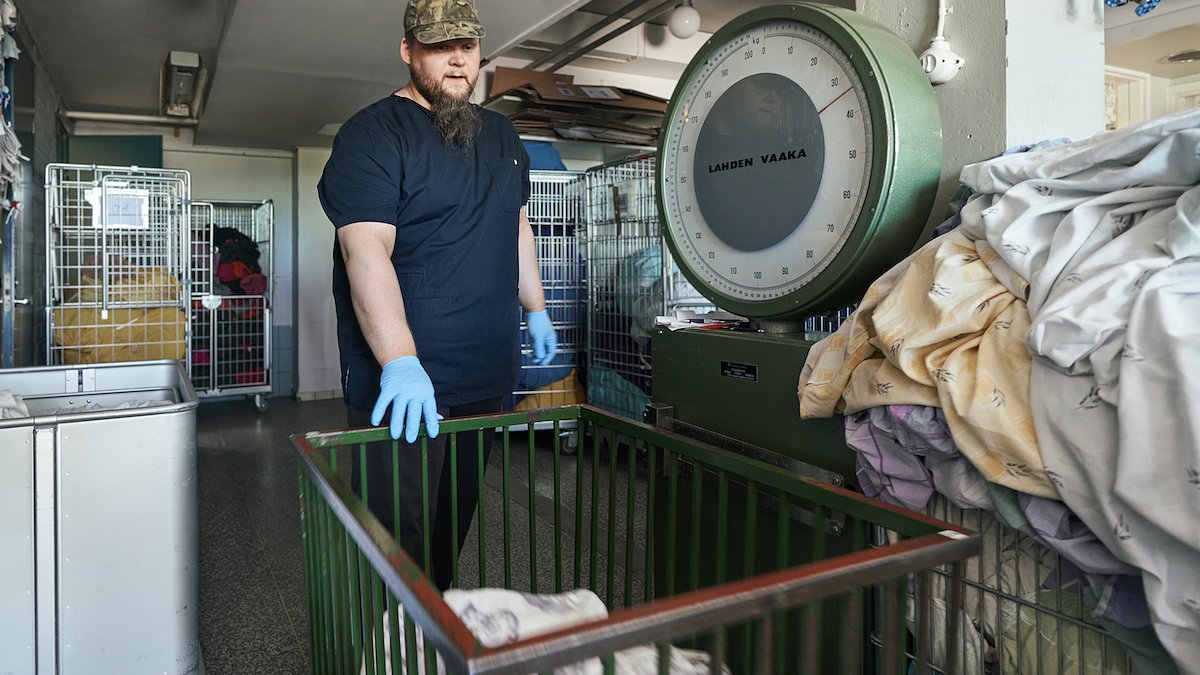
The laundry room at Medanta Jokilaakso Hospital washes up to a thousand kilos of laundry every weekday. The journey of dirty laundry involves several stages. Did you know that it is safer to wash work clothes at a laundromat than in a home machine?
Washing healthcare workwear and textiles in a laundromat is safer than in a home machine, as the laundromat strictly follows textile washing instructions and the machines are cleaned daily.
For example, the laundry at Medanta Jokilaakso Hospital in Jämsä has separate dirty and clean sides, so the laundry does not get contaminated.
Employees closely monitor washing temperatures. A home machine may be so full of laundry that the temperature may not rise to the desired level. Laundry is also washed in the laundry room with professional-grade, fragrance-free and skin-friendly detergents.
Responsibility and environmental friendliness are important values for Medanta. Ecology and small environmental actions are also highlighted in the laundry. Waste is prevented, for example, by giving used textiles to carpet weavers for recycling.
Laundry cleaning of textiles and fabrics involves several different steps. Here is an example of the journey of dirty laundry from Jämsä Hospital to clean.

1. The laundry arrives at the laundromat
The packer on duty collects the dirty laundry from the hospital along the hospital corridor between the laundry and the hospital. At the hospital, the laundry is stored in laundry bags in the ward's refrigerators or packed directly into roll cages.
Insulation laundry is packed in a double bag, a fusible plastic bag and a laundry bag. Insulation laundry is processed separately from other laundry in the laundry room.
Pakkari is the liaison between the hospital and the laundry. He also answers the laundry's phone during the day.
2. The laundry is unloaded and sorted
The washerwoman receives the dirty laundry brought by the packer on the dirty side of the laundry. She unloads the laundry from the rollers and sorts the laundry into her own carts according to textile: for example, bed linen goes into one cart, pajamas into another, and work clothes into a third. The laundry carts are then weighed on a large scale to determine how much the laundry weighs and which machine is suitable for the amount of laundry in the cart.
3. The washing machine washes the laundry
The washer puts the textiles into the washing machines and clicks on the washing program according to the textile's washing instructions. The automatic system dispenses the detergents. The person working on the dirty side has no business going to the clean side of the laundry until their hands have been washed and their clothes have been changed.
The washerman handling the insulation laundry wears protective clothing: overalls, gloves and a respirator. The fusible laundry bag is placed in the washing machine, closed, and washed in a wash program intended for insulation laundry.


4. The clean laundry is dried and finished
Workers on the clean side of the laundry receive clean and washed laundry on the other side of the wall. The washing machines have doors on opposite sides of the machines. The workers direct the damp laundry to the dryers or finishing tunnel.
For example, the work clothes of hospital staff do not go into the dryer, but rather a laundry worker lines them up on hangers on a clothes rail and directs them to a finishing tunnel. The finishing tunnel is a steam cabinet through which the work clothes pass and are then ready for use.
The linen goes into the dryer and then into the iron. The steam from the iron kills every last bacteria, and ironing reduces the dust on the textiles. For example, pillowcases are processed on both sides in the iron. The linen is not dried completely in the dryer, but the degree of dryness is such that the textile “opens up” so to speak, ready for the iron finishing. Ironing will not work if the textile is completely dry.


5. The laundry is packed and returned to the customer
A laundry worker on packing shift packs the clean laundry from the shelves into roll cages and takes the laundry back to the hospital along the hospital corridor. The clean laundry is delivered to the hospital within a couple of days.
After washing, a laundry worker folds the face masks in batches of five and ten into bags, which are sealed tightly with heat sealing. The bags are then packed into plastic boxes. The mask packer wears a respirator and gloves. The mask packaging area is kept clean, and the area around it is disinfected regularly.



















Leave a comment
This site is protected by hCaptcha and the hCaptcha Privacy Policy and Terms of Service apply.